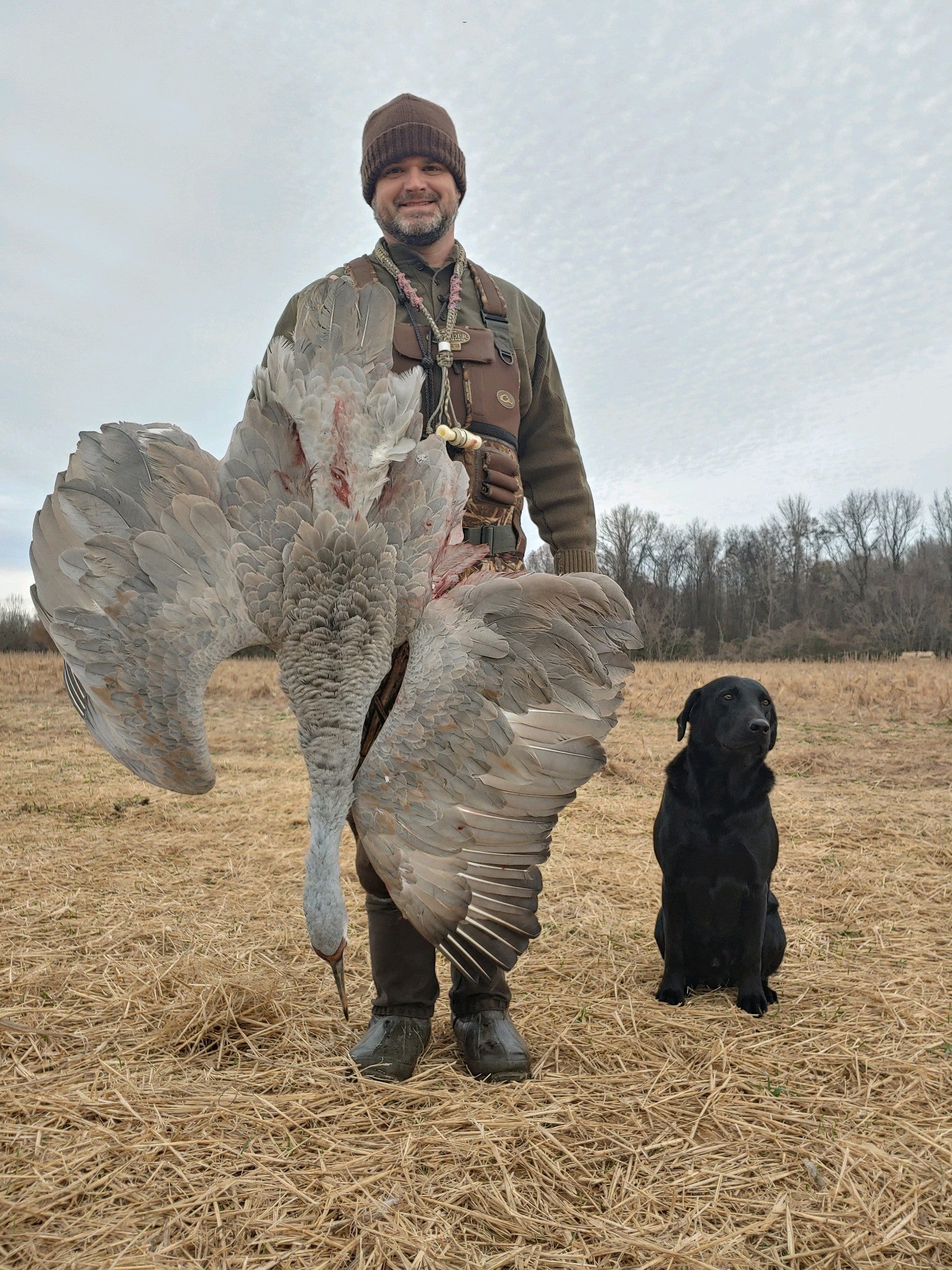By Kenny Johnson, Alabama Department of Conservation and Natural Resources
Alabama’s sandhill crane season returns for 2021-2022 with 400 permit holders having the opportunity to hunt sandhill cranes in north Alabama. Registration for the permits opens on September 8, 2021. The 2021-2022 season is split in two segments. The first segment runs from December 3 to January 9. The second segment runs from January 17-31.
Seth Maddox, Migratory Game Bird Coordinator for the Alabama Department of Conservation and Natural Resources’ (ADCNR) Division of Wildlife and Freshwater Fisheries (WFF), said a pair of factors made last year’s sandhill crane season successful for a majority of the 400 permit holders.
“It was a record year for wintering sandhill crane numbers in Alabama,” he said. “During the annual mid-winter survey, 23,354 sandhill cranes were counted across north Alabama. That is a 91% increase in birds over the 2020 survey. That’s also a 76% increase in sandhill cranes as compared to the long-term average of 13,242.”
A warmer, drier winter also contributed to the success of the season.
“Although the temperatures were above average during the hunting season, it was drier compared to the previous season,” Maddox said. “The water on the landscape was closer to average causing birds to concentrate more in traditional roost sites versus being more spread across the landscape as in the previous season.”
More sandhills and milder weather led to more birds being harvested compared to the 2019-2020 inaugural season.
“The overall harvest increased by 100 birds from 291 in 2019-2020 to 391 in 2020-21,” Maddox said. “Hunters were generally more successful last season as they figured out how to hunt these wary birds.”
James Michael Moyer from Irondale, Alabama, was one of those successful hunters. While Moyer had never hunted sandhills before the 2020-2021 season, he began researching the birds in early 2019 when he learned Alabama would be opening its first sandhill season in more than 100 years.
“I’d observed sandhills in other states but never really studied them because we didn’t have a season,” he said. “I called people all over the U.S. for tips on how to be successful. Some worked, some didn’t. Many of my all-day hunts were unsuccessful, but I always learned something new to try for the next one.”
Moyer met his three bird limit during the season and can attest to the sandhill’s reputation as the “ribeye of the sky.” However, it’s the conservation success story associated with the bird that he’s most proud of as a hunter.
Prior to the 2019-2020 season, the last sandhill crane hunting season in Alabama was in 1916. Since then, conservation efforts focused on improving habitat have helped sandhill crane numbers rebound enough to support a limited quota season in the state.
“Thanks to the hard work of biologists and waterfowl organizations, with the support of hunters through license and duck stamp funding, we are now seeing more sandhill cranes and have this new hunting opportunity,” Moyer said. “I strongly believe this is one of the greatest conservation success stories of my lifetime.”
The WFF’s Wildlife Section is primarily funded through a portion of hunting license sales that is matched on a three-to-one basis by the U.S. Fish and Wildlife Service through the federal Pittman-Robertson Act. Alabama State Duck Stamp sales are also matched through the same process, but earmarked by state law to be utilized for wetlands and waterfowl conservation. Funding from these two revenue sources directly benefits sandhill cranes by providing habitat protection, management and restoration work in the areas of Alabama that cranes utilize as migration routes and wintering habitat.
Registration for the 2021-2022 permits is limited to Alabama residents ages 16 or older or Alabama lifetime hunting license holders. Applicants must have their regular hunting license and a state waterfowl stamp to register. A $10 registration fee applies.
In addition to a hunting license and state duck stamp, hunters must also acquire a federal duck stamp and Harvest Information Program certification, and, if hunting on a Wildlife Management Area (WMA), a WMA license. Both state and federal wildlife refuges are closed to sandhill crane and waterfowl hunting.
For more information about the 2021-2022 sandhill crane hunting season, including the hunting zone location, how to register and how the permit holders are selected, visit www.outdooralabama.com/what-hunt/sandhill-crane-hunting-alabama.
The Alabama Department of Conservation and Natural Resources promotes wise stewardship, management and enjoyment of Alabama’s natural resources through four divisions: Marine Resources, State Lands, State Parks, and Wildlife and Freshwater Fisheries. To learn more about ADCNR, visitwww.outdooralabama.com.
###






